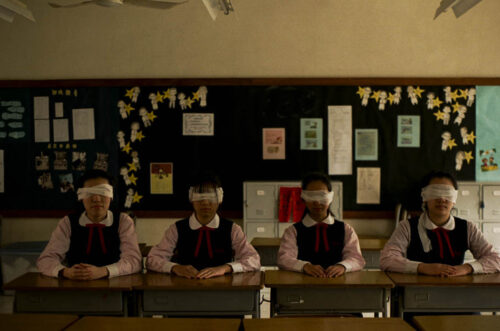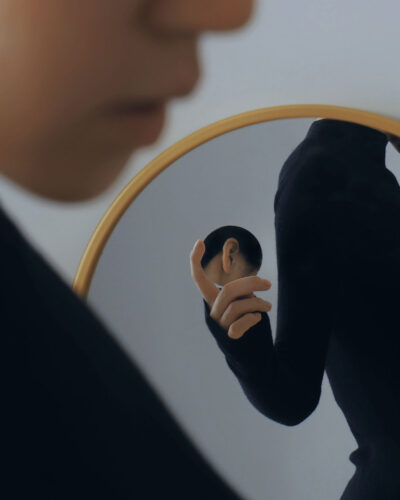Chinese Girls in New York
Ni Ouyang's portraits of Chinese femininity

This article was originally published on Neocha and is republished with permission.
There’s no place like home, so they say. But does the old proverb still hold true to today’s youth?
New York, a city with one of the largest Chinese populations outside of Asia, has long been home to many Chinese immigrants. The earliest Chinese immigrants to settle in the Big Apple can be traced back to the 1840s and 1850s. Today, the Chinese population accounts for six percent of New York City’s total population, and it’s increasing each year.
The Chinese-American community there has been documented through the lens of photographers such as Bud Glick and Thomas Holton, who have shown the tenacity and grit of New York’s Chinese diaspora. However, these typically only focused on older generations. Photographer Ni Ouyang hopes to present a new perspective on the Chinese-American experience, choosing instead to point her lens at young Chinese girls living in the city. Through her portraits, she offers forth a story of feminine power, individuality, and contemporary Chinese-ness.


Like many international students who decided to study in New York, Ni hoped to stay after graduating. After completing a degree in photography at the SUNY Fashion Institute of Technology, she took the leap of faith and began working freelance gigs in the city. Over time, she began seeing many parallels between her hometown of Shanghai and New York City, especially in the ways that older architecture are wedged between the newer gleaming skyscrapers. New York, however, is much more culturally diverse, which was the biggest factor in her decision to stay. The longer she stayed though, the fresh eyes through which she saw the city began grew tired, and a feeling of mundanity began to set in, which she felt a need to shake. “This was when I started to really reflect about who I am,” Ni says. “I thought long and hard about where I wanted my career to go, and how I can create work that can find resonance within Western culture.”




Her photo series, Chinese Girls in New York, was conceptualized out of these meditations. Contemporary femininity, age constructs, and Western perceptions of China are just among a few of the issues that she’s long been fascinated by, and she saw the project as a way of examining all of these matters through a broader scope. “As a Chinese woman in New York, I’m also a central subject to my project,” Ni says. “The work taps into my background, personal experiences, and feelings to lend insight into Chinese girls living abroad—visualizing both a struggle to come to terms with their disparate identities and their epiphanies. By showing these girls with their guards down, the project is a response to the cultural stereotypes often perpetuated by Western mainstream media. At the same time, it’s also a reflection on femininity and how multifaceted it can be.”




All of the girls featured in the photo series were born in China and later moved to New York. Their professions range from artists and designers to office workers and students. “They all have their own stories,” Ni says. “I chose to photograph them in locations that have relevance to them, or places that they have an emotional connection to. It could be their homes, studios, or anywhere that they have special memories of. I also considered how the environment could be used to better capture their appearance and personalities. Being that the photos were shot with an empathetic eye and through a female gaze, the project was also a process of self-discovery for myself.”


Even though she’s acclimated to life in the States, Ni is prouder than ever of her Chinese roots. This series is largely focused on Chinese femininity, but she also hopes for these images to give Western audiences a renewed perspective on what it means to be Chinese in modern times—regardless of gender. Photography, as she sees it, can serve as an important voice for Asian minorities. “Chinese immigrants in New York are usually thought of as meek, law-abiding people who are just interested in going about their own business,” Ni says. “They’re seen as people who are unconcerned with politics, equality, and so on. But with the uptick in Asian hate crimes and anti-Asian sentiment in the U.S., Chinese communities have rallied together. It’s more important than ever for people to realize that the Asian minorities deserves a voice in Western society. It goes beyond the individual. Having a voice is a powerful tool in the fight for Asian rights.”
Like this stories? Follow Neocha on Facebook and Instagram.
Website: www.niouyang.com
Instagram: @rotten_avocadoo
Contributor: Pete Zhang






